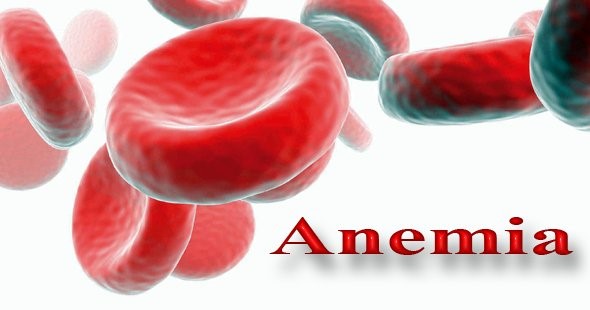
It means that the level of haemoglobin in the blood is lower than that required. Haemoglobin is important to carry oxygen from the lungs to different parts of the body.
Normal value in males is 13.5 to 18 gm%.
and in females is 12.5 to 16 gm%.

Causes
Iron deficiency anaemia is the commonest form and results from a shortage of iron from a poor diet, blood loss, illness or infection. Pregnant women are particularly at risk.
Pernicious anaemia develops due to lack of intrinsic factor, which is secreted by the stomach which prevents absorption of vitamin B12 required for red blood cell production. It affects vegetarians and group A particularly.
Megaloblastic anaemia results from shortage of folic acid, which is found in fresh vegetables, fruits and liver. This is more seen in elderly people and pregnant women.
Improper formation of red blood cells.
Continous blood loss as in trauma and heavy menstruation.
Prolonged illness.
It can sometimes be a hereditary tendency.
Signs & Symptoms
- Paleness of the skin, nail bed and tongue
- Weakness and dizziness
- Loss of appetite
- Headaches
- Palpitation
- Breathlessness on exertion
- Increased pulse rate
- Sore tongue
- Weight loss
- Insomnia
